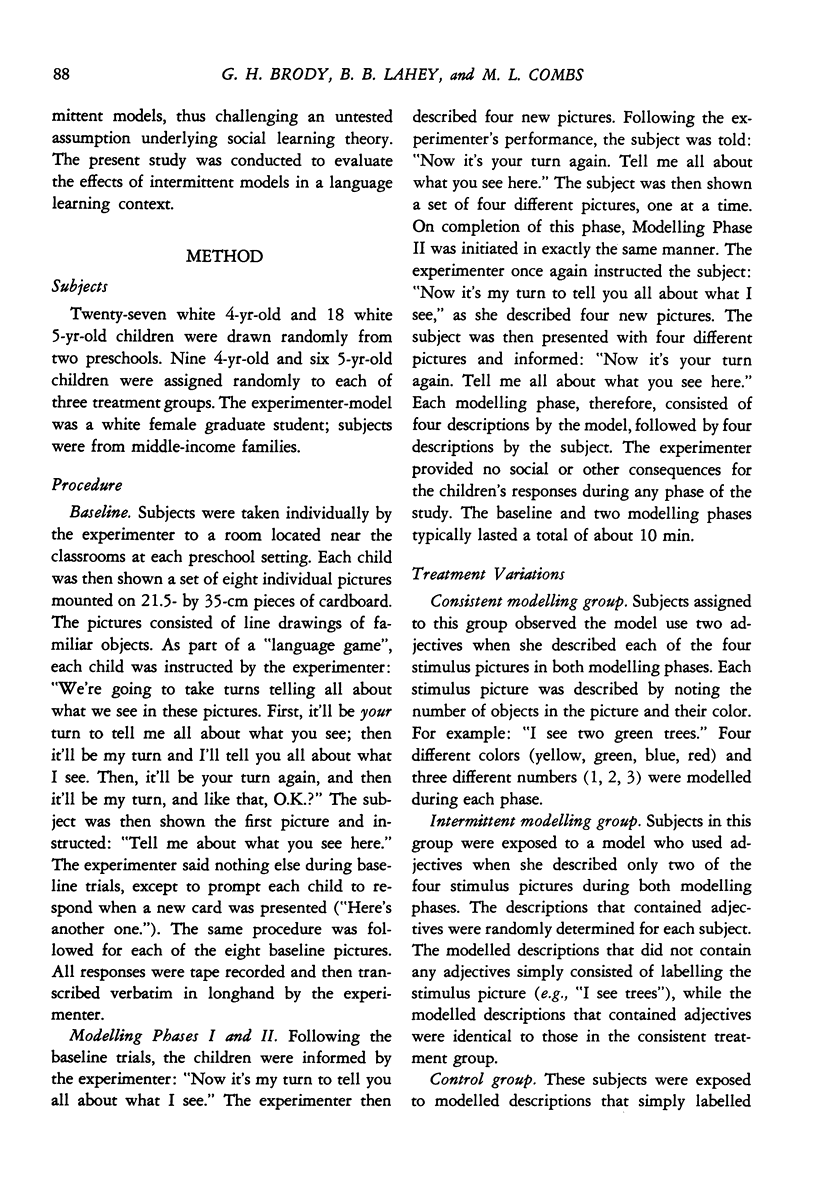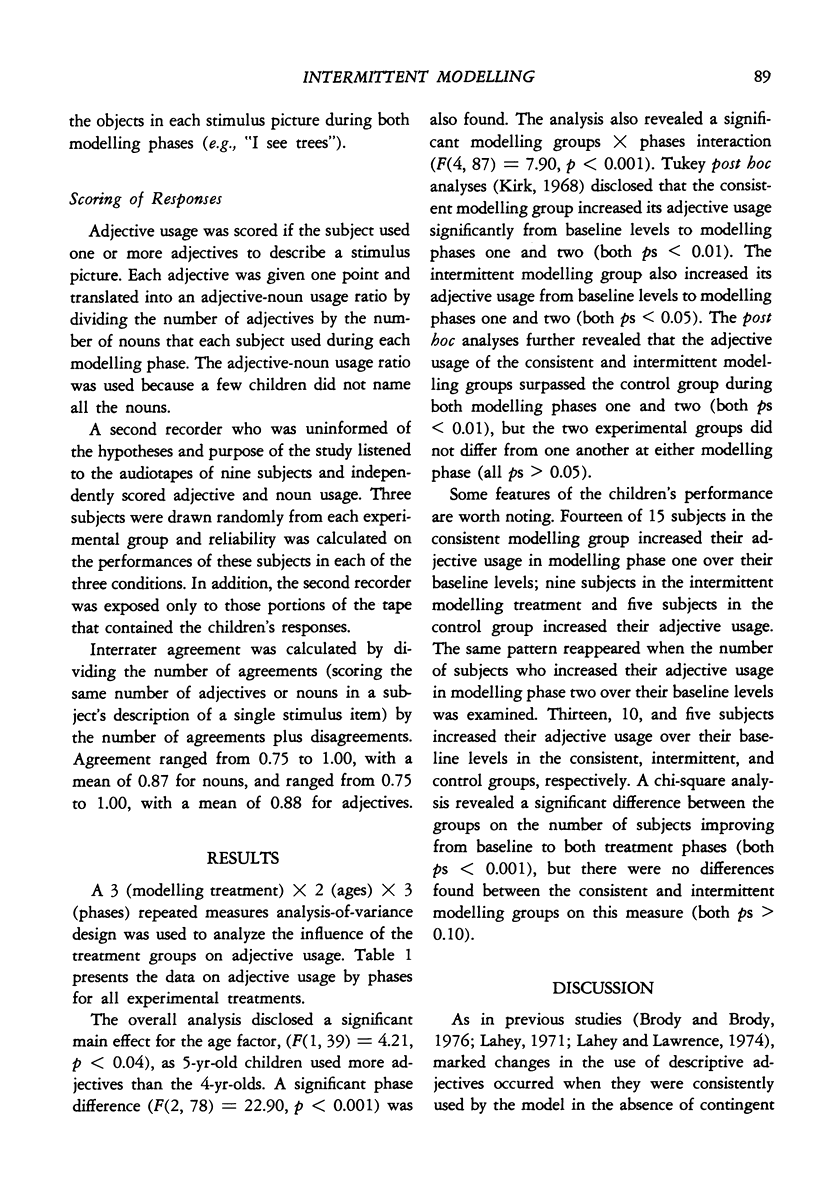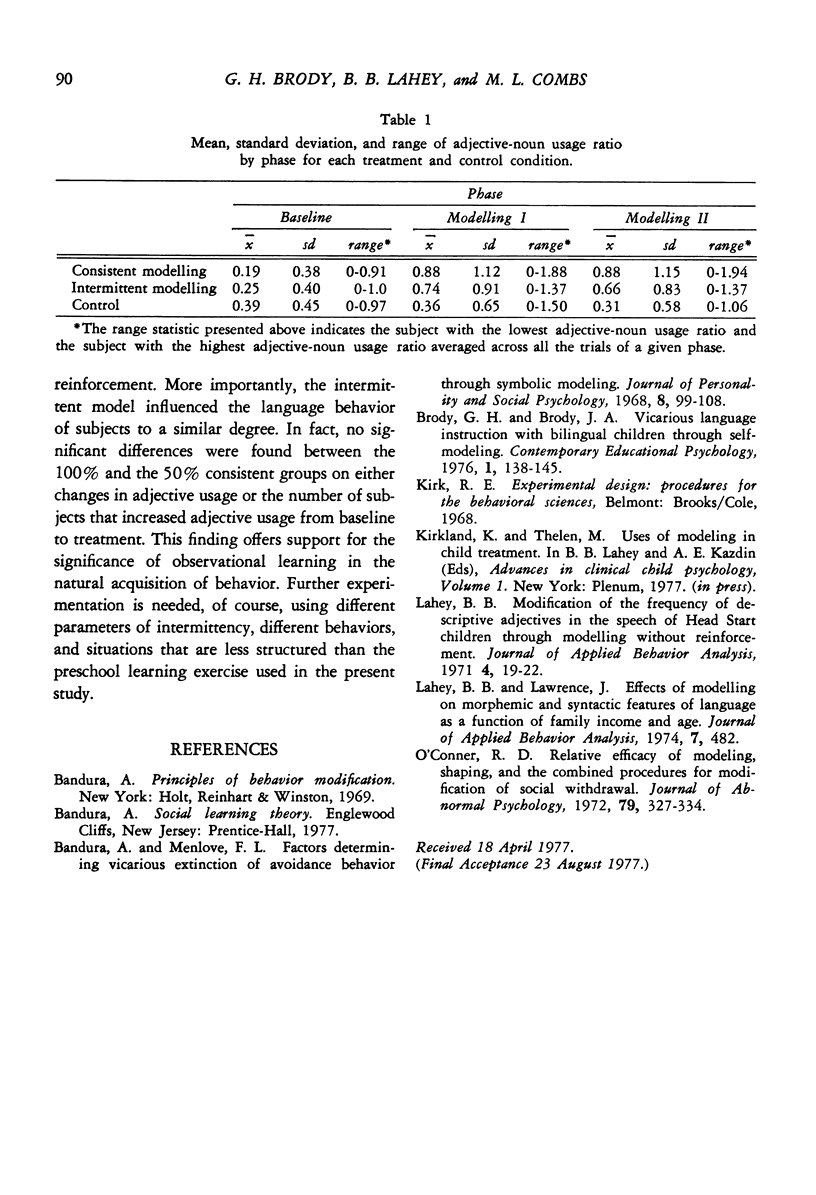Abstract
A large research literature suggests that modelling in the absence of reinforcement for either the model's or the observer's behavior is a potent source of social learning. This literature is based entirely, however, on experiments using models that always display the critical behaviors. It is possible, therefore, that results obtained in these experiments would not generalize to natural settings in which modelling is intermittent. The effects of intermittent modelling were examined using three groups of 15 four- and five-year-old children. Male and female children from middle-income families were individually exposed to an adult model who alternated descriptions of pictures of common objects. With one group, the model used no descriptive adjectives (color or number) in her descriptions after baseline; she used descriptive adjectives with 50% of the pictures with a second group, and 100% of the pictures with a third. Analyses of the data showed that the children substantially increased their use of descriptive adjectives in both modelling groups, but not in the no-modelling group. The fact that there were no significant differences between the 50% and 100% modelling groups suggests that results obtained in studies using consistent modelling can be generalized to natural settings.
Keywords: observational learning, modelling, intermittent modelling language, children
Full text
PDF



Selected References
These references are in PubMed. This may not be the complete list of references from this article.
- Bandura A., Menlove F. L. Factors determining vicarious extinction of avoidance behavior through symbolic modeling. J Pers Soc Psychol. 1968 Feb;8(2):99–108. doi: 10.1037/h0025260. [DOI] [PubMed] [Google Scholar]
- Lahey B. B. Modification of the frequency of descriptive adjectives in the speech of Head Start children through modeling without reinforcement. J Appl Behav Anal. 1971 Spring;4(1):19–22. doi: 10.1901/jaba.1971.4-19. [DOI] [PMC free article] [PubMed] [Google Scholar]
- O'Connor R. D. Relative efficacy of modeling, shaping, and the combined procedures for modification of social withdrawal. J Abnorm Psychol. 1972 Jun;79(3):327–334. doi: 10.1037/h0033226. [DOI] [PubMed] [Google Scholar]
- doi: 10.1901/jaba.1974.7-482. [DOI] [PMC free article] [Google Scholar]


